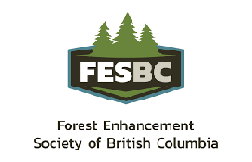Midway, B.C. – When a 2018 windstorm caused a massive blowdown of trees and debris on the Midway Trails network around the small, rural community of Midway located on Highway 3, about an hour east of Osoyoos, an urgent need for restoring the trails arose. The fantastic transformation of the trails that followed is still evident today, and the recreational trails are a favourite for locals and visitors alike.
Ross Elliott, secretary of the West Boundary Community Forest (WBCF), and president of the Midway Trails Society explained that while the Midway Trails project was needed initially to clean the blowdown and prevent a fir-beetle infestation, three additional reasons were identified for the restoration work – wildfire risk mitigation, construction of several new trails, and to open up the trails to make them more scenic for hikers.

"Because of the blowdown and infestation, we wanted to clear that out but there was also the need for wildfire risk mitigation work and getting some fire-breaks up along the U.S. border, between the border and the village of Midway,” Elliott said.
“We also thought that opening up the trails would provide enhanced views capes in the forest. A lot of hikers and other recreational trail users appreciate a view of the surrounding area, so we really wanted to provide that for people. With our overall work we improved some of the trails and added a couple more.”
The project was a result of a strong partnership between the WBCF, the Osoyoos Indian Band, Vaagen Fibre Canada, a robust network of volunteers, as well as funding from the Forest Enhancement Society of BC (FESBC) and the WBCF.
Dan Macmaster, Fibre Manager for Vaagen Fibre Canada and Forest Manager of the WBCF, emphasized the partnerships that took place to make the project a reality.
“The project wouldn’t have happened without our strong partnerships and community efforts,” said Macmaster. “Right from the Osoyoos Indian Band’s forestry team providing archeological assessments and its members participating in post-harvest treatments, to Vaagen’s work on developing, supervising and implementing the prescription, it was a group effort.
He added that the funding from the FESBC and WBCF, infused the project with a much needed boost.
Not only has the Midway Trails Project added restorative value to the trails network, but also enhanced its recreational value. This has also proven to be a great opportunity for school groups to learn about the Community Forest, as well as being able to participate in some hands-on work.

“Now, two years later, it looks really good; we haven’t had any more blowdowns, it has been a great benefit for wildfire risk mitigation, protecting the village, and improving the trails,” said Elliott. “We are getting a lot of use and more so because the trails are well-maintained.”
While only around 649 people reside in the village of Midway, the trails have always been used extensively by those in local communities, as well as numerous visitors. Now, after the restoration work, the trail network is witnessing more footfall.
“There is a core group of people who hike up there and we are getting to be well-known among other trail users. People camp here during summers because there is a lovely river that they can float down.
We get about 2,000 people signing in every year and encourage people to sign in so we get an accurate idea of the amount of traffic on the trails,” Elliott explained.
“After the work on the Midway Trails Project, the trails are in excellent shape; it is a park-like setting up there now, rather than an overgrown forest. It’s a very enjoyable place to be.”
Healthy Forests. Healthy Communities










Comments